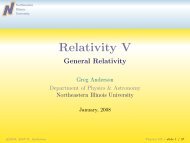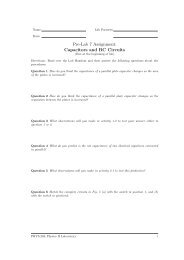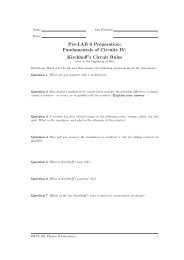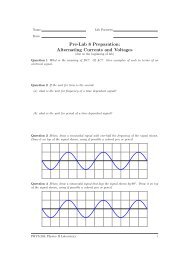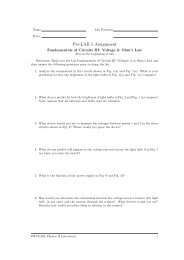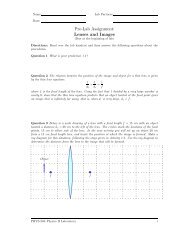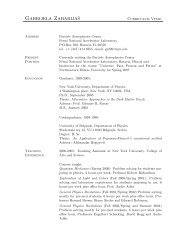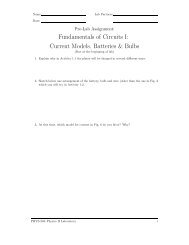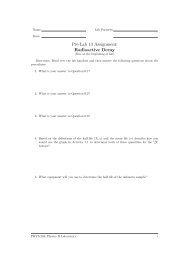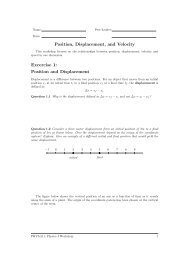Pre-LAB 4 Assignment Fundamentals of Circuits II: Currents ...
Pre-LAB 4 Assignment Fundamentals of Circuits II: Currents ...
Pre-LAB 4 Assignment Fundamentals of Circuits II: Currents ...
You also want an ePaper? Increase the reach of your titles
YUMPU automatically turns print PDFs into web optimized ePapers that Google loves.
<strong>Fundamentals</strong> <strong>of</strong> <strong>Circuits</strong> <strong>II</strong>: <strong>Currents</strong> & <strong>Circuits</strong> v 0.3<br />
A<br />
A<br />
+<br />
−<br />
+<br />
−<br />
B<br />
B<br />
C<br />
(a)<br />
(b)<br />
Figure 10: Two circuits with different arrangements <strong>of</strong> identical light bulbs<br />
<strong>of</strong> bulbs B and C? (You may want to go back to the definitions <strong>of</strong> series and parallel connections<br />
at the beginning <strong>of</strong> Investigation 2.)<br />
Question 3.2 In Fig. 10 (b) are bulbs B and C connected in series or in parallel with each<br />
other, or neither? Explain.<br />
Question 3.3 Is the resistance <strong>of</strong> the combination <strong>of</strong> bulbs B and C larger than, smaller than,<br />
or the same as bulb B alone? Explain.<br />
Question 3.4 Is the resistance <strong>of</strong> the combination A, B and C in Fig. 10 (b) larger than,<br />
smaller than or the same as the combination <strong>of</strong> A and B in Fig. 10 (a)? Explain.<br />
<strong>Pre</strong>diction 3.1 <strong>Pre</strong>dict how the current through bulb A will change, if at all, when circuit<br />
10(a) is changed to 10(b) (when bulb C is added in parallel to bulb B). What will happen to the<br />
brightness <strong>of</strong> bulb A? Explain the reasons for your predictions.<br />
PHYS-204:Physics <strong>II</strong> Laboratory 17




